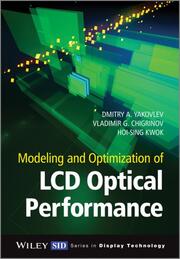Detailansicht
Modeling and Optimization of LCD Optical Performance
Wiley Series in Display Technology
ISBN/EAN: 9780470689141
Umbreit-Nr.: 4907490
Sprache:
Englisch
Umfang: 584 S.
Format in cm: 3 x 25.2 x 18
Einband:
gebundenes Buch
Erschienen am 20.03.2015
Auflage: 1/2015
€ 115,00
(inklusive MwSt.)
Nachfragen
